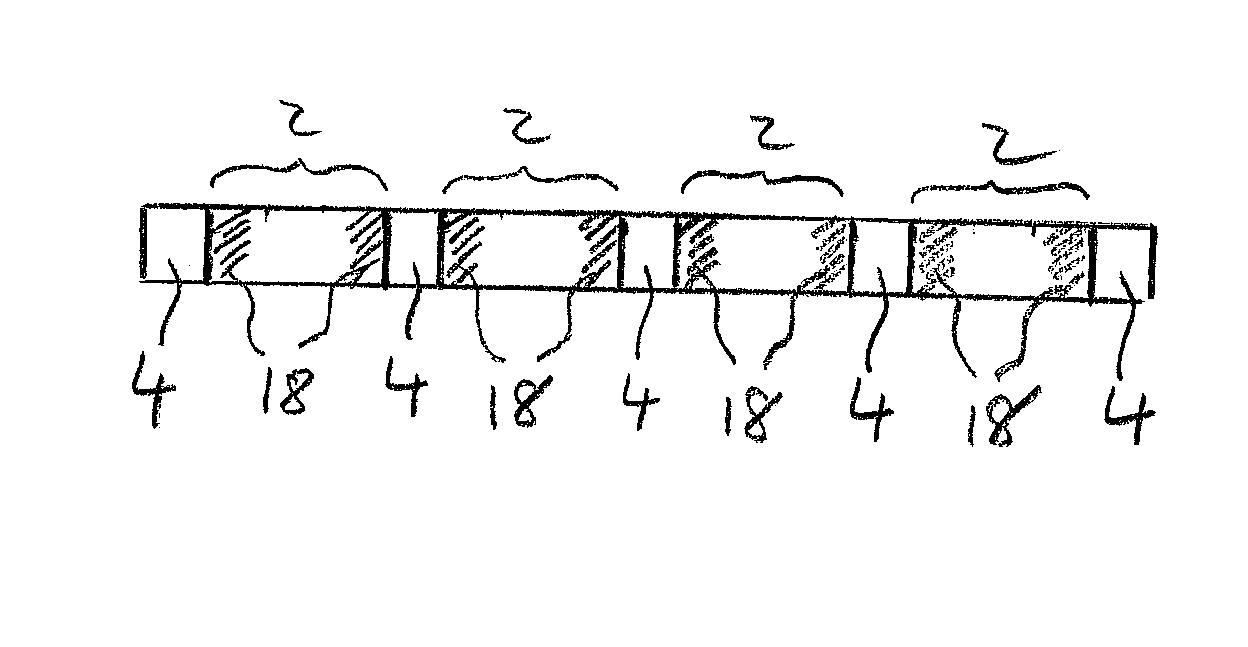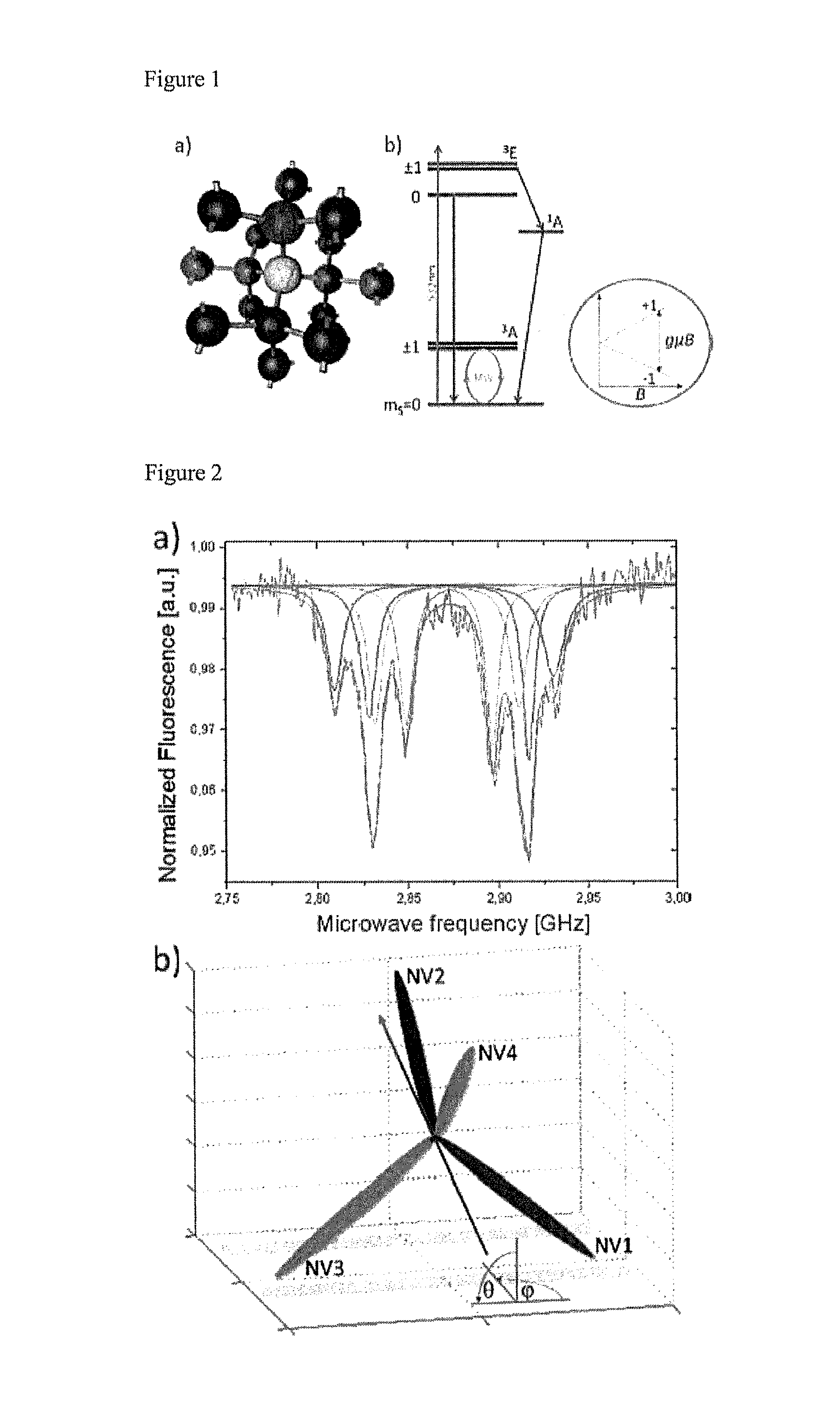Diamond sensors, detectors, and quantum devices
a detector and detector technology, applied in the field of diamond sensors, detectors, quantum devices, can solve the problem of inevitability of defects in every region of the material
- Summary
- Abstract
- Description
- Claims
- Application Information
AI Technical Summary
Benefits of technology
Problems solved by technology
Method used
Image
Examples
Embodiment Construction
[0045]FIGS. 3(a) to 3(c) illustrate layered synthetic single crystal diamond materials according to embodiments of the present invention.
[0046]FIG. 3(a) shows a layered synthetic single crystal diamond material comprising a three layer structure. This layered structure may be entirely formed in a single crystal of synthetic diamond material such that the layers share a common crystal lattice. A first layer 2 comprises a plurality of electron donor defects. A second layer 4 comprises a plurality of quantum spin defects. A third layer 6 is disposed between the first and second layers 2, 4 such that the first and second layers 2, 4 are spaced apart by a distance in a range 10 nm to 100 μm. This distance is selected to allow electrons to be donated from the first layer 2 to the second layer 4 thus forming negatively charged quantum spin defects in the second layer 4. Furthermore, the distance between the first and second layers 2, 4 is selected to ensure dipole coupling between electron...
PUM
| Property | Measurement | Unit |
|---|---|---|
| thickness | aaaaa | aaaaa |
| decoherence time T2 | aaaaa | aaaaa |
| decoherence time T2 | aaaaa | aaaaa |
Abstract
Description
Claims
Application Information
 Login to View More
Login to View More - R&D
- Intellectual Property
- Life Sciences
- Materials
- Tech Scout
- Unparalleled Data Quality
- Higher Quality Content
- 60% Fewer Hallucinations
Browse by: Latest US Patents, China's latest patents, Technical Efficacy Thesaurus, Application Domain, Technology Topic, Popular Technical Reports.
© 2025 PatSnap. All rights reserved.Legal|Privacy policy|Modern Slavery Act Transparency Statement|Sitemap|About US| Contact US: help@patsnap.com



